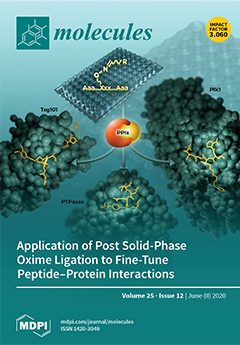Open AccessArticle
The Lipoxin Receptor/FPR2 Agonist BML-111 Protects Mouse Skin Against Ultraviolet B Radiation
by
Renata M. Martinez, Victor Fattori, Priscila Saito, Ingrid C. Pinto, Camilla C. A. Rodrigues, Cristina P. B. Melo, Allan J. C. Bussmann, Larissa Staurengo-Ferrari, Julia Rojo Bezerra, Josiane A. Vignoli, Marcela M. Baracat, Sandra R. Georgetti, Waldiceu A Verri Jr. and Rubia Casagrande
Cited by 24 | Viewed by 4698
Abstract
Excessive exposure to UV, especially UVB, is the most important risk factor for skin cancer and premature skin aging. The identification of the specialized pro-resolving lipid mediators (SPMs) challenged the preexisting paradigm of how inflammation ends. Rather than a passive process, the resolution
[...] Read more.
Excessive exposure to UV, especially UVB, is the most important risk factor for skin cancer and premature skin aging. The identification of the specialized pro-resolving lipid mediators (SPMs) challenged the preexisting paradigm of how inflammation ends. Rather than a passive process, the resolution of inflammation relies on the active production of SPMs, such as Lipoxins (Lx), Maresins, protectins, and Resolvins. LXA4 is an SPM that exerts its action through ALX/FPR2 receptor. Stable ALX/FPR2 agonists are required because SPMs can be quickly metabolized within tissues near the site of formation. BML-111 is a commercially available synthetic ALX/FPR2 receptor agonist with analgesic, antioxidant, and anti-inflammatory properties. Based on that, we aimed to determine the effect of BML-111 in a model of UVB-induced skin inflammation in hairless mice. We demonstrated that BML-111 ameliorates the signs of UVB-induced skin inflammation by reducing neutrophil recruitment and mast cell activation. Reduction of these cells by BML-111 led to lower number of sunburn cells formation, decrease in epidermal thickness, collagen degradation, cytokine production (TNF-α, IL-1β, IL-6, TGF, and IL-10), and oxidative stress (observed by an increase in total antioxidant capacity and Nrf2 signaling pathway), indicating that BML-111 might be a promising drug to treat skin disorders.
Full article
►▼
Show Figures






